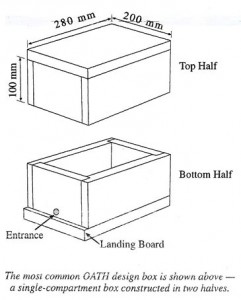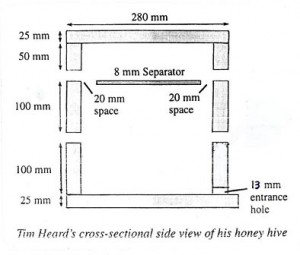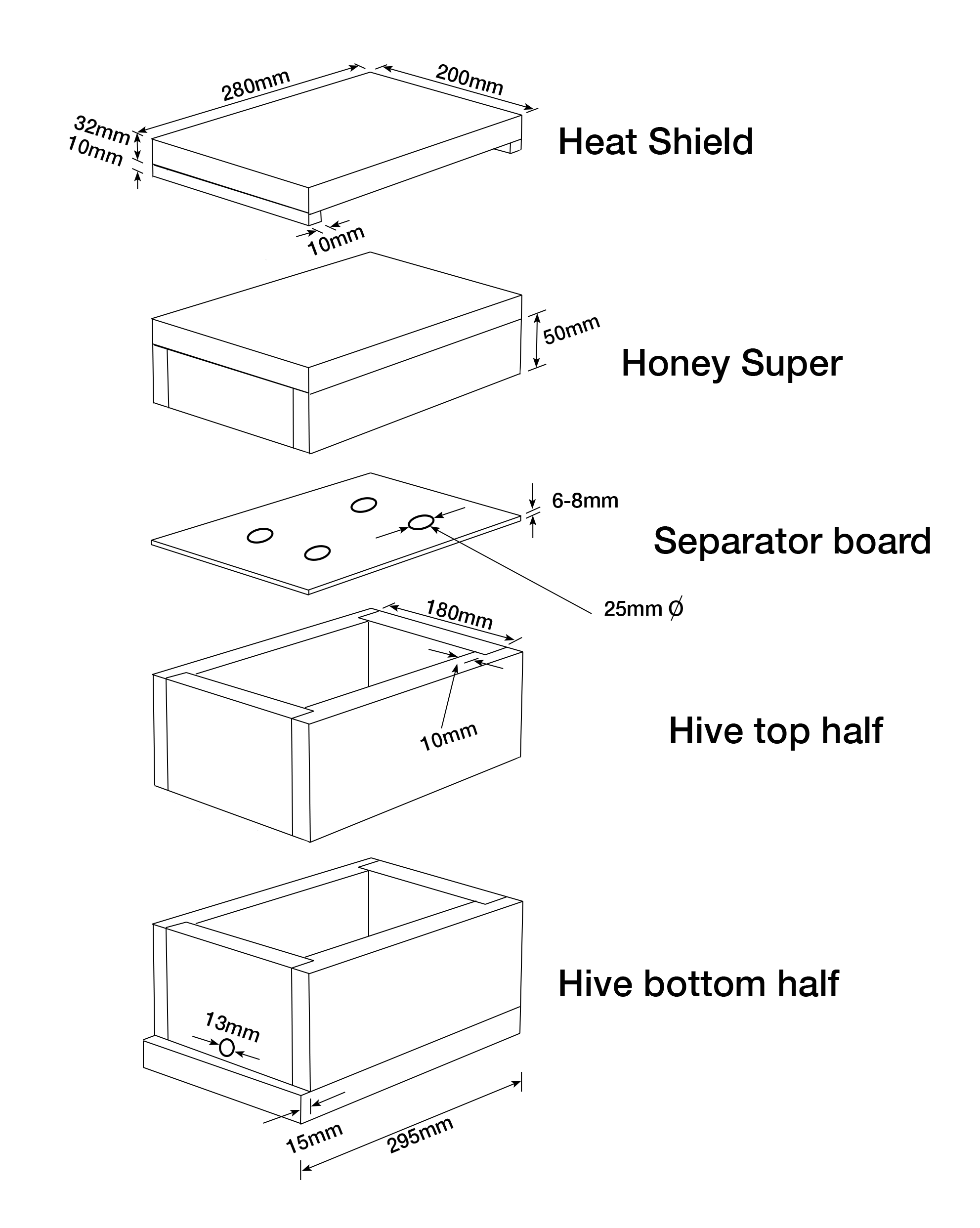Rochedale Community Garden has a hive of Tetragonula carbonaria which are one of the species of native stingless bees. These native bees are sometimes called ‘Sugarbag bees’ and were known as Trigona carbonaria until they were reclassified in 2012. This species is found from around Bundaberg in QLD to as far south as about Bega in NSW.
These little guys grow to about 4mm in length are one of the 1500 or so native Australian bee species. They are great pollinators and produce small quantities of the sweetest of honey which is known as ‘Sugarbag’. They are becoming increasingly popular because they are great pollinators, easy to keep, educational and somewhat entertaining pets.
Commercial honey bees (Apis mellifera) are not native to Australia. They were introduced from Europe in about 1822.
Most Australian native bees are solitary bees which raise their young in burrows in the ground or in tiny hollows in timber. Tetragonula carbonaria are however one of the 10 species of social native bees (genera Tetragonula and Austroplebeia) which do not sting!
Native Bee Hive designs
 The OATH (Original Australian TrigonaHive) design of hive is one of the most commonly used for Tetragonula carbonaria. It is good for housing your bees and for splitting the hive into two but is not good if you wish to collect the honey. Where honey is to be collected an additional story (known as a honey super) needs to added on top of the standard OATH design.
The OATH (Original Australian TrigonaHive) design of hive is one of the most commonly used for Tetragonula carbonaria. It is good for housing your bees and for splitting the hive into two but is not good if you wish to collect the honey. Where honey is to be collected an additional story (known as a honey super) needs to added on top of the standard OATH design.
OATH design boxes are usually made from 25 – 32 mm cypress pine. Timber which is thicker provides better insulation and is generally considered preferable. You will require about 2 lineal meters of 200 x 32 timber to make a single hive.
Joints should be screwed and glued and the internal joints rebated to provide a more weather proof and solid structure.
 The image beside shows Tim Heard’s modified version of the OATH hive which includes a honey super to the top of the hive. Notice that the top half of the hive does not have a timber top, instead the honey super and the top half of the hive a separated by a piece of 8 mm plywood. The plywood separator has 4 x 25 mm holes drilled in it to allow the bees to access the honey super.
The image beside shows Tim Heard’s modified version of the OATH hive which includes a honey super to the top of the hive. Notice that the top half of the hive does not have a timber top, instead the honey super and the top half of the hive a separated by a piece of 8 mm plywood. The plywood separator has 4 x 25 mm holes drilled in it to allow the bees to access the honey super. The hive system that we have in the garden includes an additional top section to help stabilize the temperature within the hive if it is exposed to the hot sun.
The hive system that we have in the garden includes an additional top section to help stabilize the temperature within the hive if it is exposed to the hot sun.
We have developed a set ofModified OATH Bee Hive Plans and Construction Notes which are available for download.
Positioning a native bee hive
The positioning of your native bee hive is important. It should be located in a sheltered position where it is protected from the afternoon sun. Under a tree or on a verandah is usually good as it will be protected from the elements.The entrance should be facing somewhere between north and east and the hive should be out of the direct sun by about 10:00am.
Native bees don’t need much space, so even a small apartment verandah is sufficient. If you are going to put them out in the open then the hive should be protected with a lid.
These bees will travel up to 500 meters but prefer to forage within about 100m of their hive.
It is important not to use pesticides within the flight range of the bees as their small sizes makes them particularly vulnerable to insecticides. If insecticides must be used near a hive then it would be good idea to close the hive up the night before by covering the entrance hole

Tidak ada komentar:
Posting Komentar